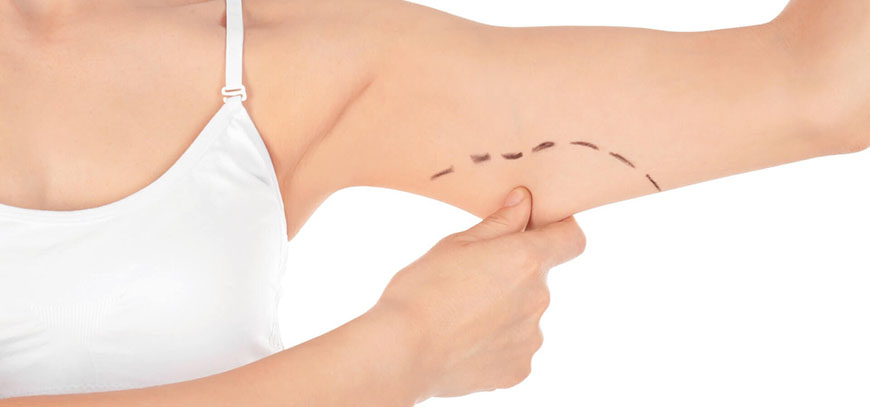Working Time
- Mon-Sat 10:00 – 19:00
Contact Info
-
+90 542 512 51 64
Ask the Experts
Arm Lift

Brachioplasty, also known as an arm lift, is a surgical procedure that reduces the circumference of the upper arms and removes excess lax skin.
The arm lift surgery targets what is often referred to as ‘bingo wings’ and is usually performed in conjunction with liposuction to improve the overall contours of the arms. This surgery is suitable for men and women and is often performed on patients who have experienced sudden weight fluctuations.
Suitable Candidates for Brachioplasty
The best candidates are men and women who are within several pounds (i.e. 10%) of their ideal weight. If you are significantly more than this you will be asked to reduce some weight before going ahead with any surgery. Ideal candidates also possess loose enough skin and tissue laxity to allow a good outcome of the operation. This will be assessed at your consultation.
People with Hidradenitis Suppurativa, a persistent ongoing infection disorder of the sweat glands in their armpits, should not undergo brachioplasty until treated appropriately. Women who have had Radical Mastectomy or extensive breast cancer surgery are also at risk of developing chronic arm swelling after undergoing this particular procedure and therefore should avoid this operation.
The Procedure
On the day of your surgery, your doctor starts by marking your arm where they plan to make incisions. There are several ways of performing an arm lift, but the most common ones involve incisions on the inside or back of your arms. Other options include an armpit incision or one that extends from the top of your elbow to your armpit.
You’re then given either local or general anesthesia, depending on the surgical method your doctor chooses. Guided by the marks they made on your arm, your doctor goes in and tightens or reshapes the tissue in your upper arm. They then pull your skin back over the tissue and close the surgical wound with stitches.
If there are extra pockets of fat that might make it hard for your arm to fully heal, your doctor may use liposuction at the same time to remove that fat. The entire procedure is usually done within a maximum of three hours.
Recovery time varies from person to person. We usually advise you to take two weeks off work and avoid lifting or driving for four weeks after your arm lift procedure.
Scars are the greatest drawback in this operation. This is because in a standard brachioplasty the operation results in a permanent scar extending the length of the upper arm, from the armpit to the elbow which may be visible in short sleeve clothing. Unfortunately, it is not usually possible to reduce the scar length in this procedure.
In fact, this is the main reason why many patients decide against having this procedure. This operation basically exchanges one cosmetic problem (loose skin) for another (scars). In general, only those with very loose saggy skin are most likely to find this exchange worthwhile. Those with a small amount of looseness will probably not want the scars.
Although initially, all scars are somewhat red and lumpy, with time (12-18 months) the scars usually settle and improve. Of course, it is not possible to ultimately predict the appearance of anyone’s scars.
You will have some pain and discomfort after this surgery. However, it is not considered a particularly painful procedure. The pain usually only lasts for a few days and, of course, you will be given appropriate pain killers to control this. One per cent of all operations can lead to major complications.
Weigh up the pros and cons; it is for you to decide. This is a surgical procedure and as such potentially serious complications such as a blood clot or embolus or an unexpected response to drugs or anaesthetics can occur.
Besides the complications that can develop after any surgery, there are problems that are special for your surgery. These include: the scar is long and maybe slow to heal, it is not unusual to have scabbing along the scar for several weeks, and fluid(either blood or serum) can collect under the skin flap.
